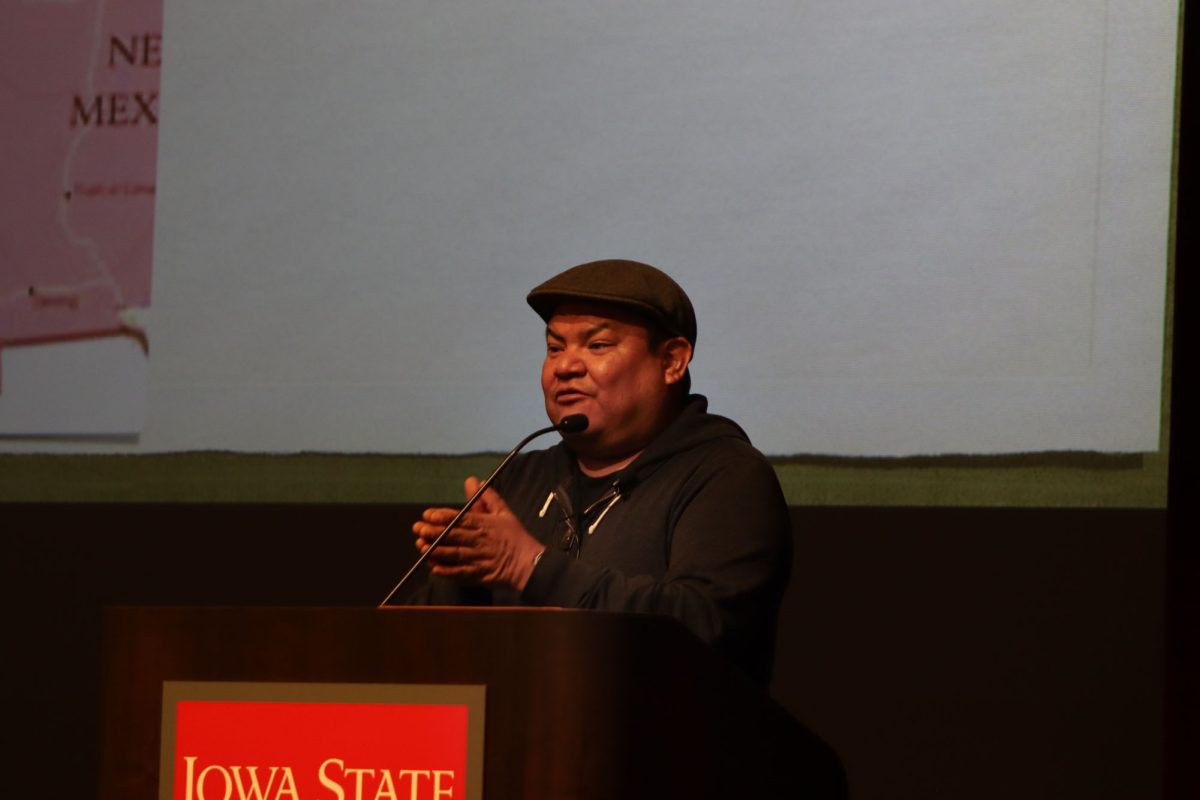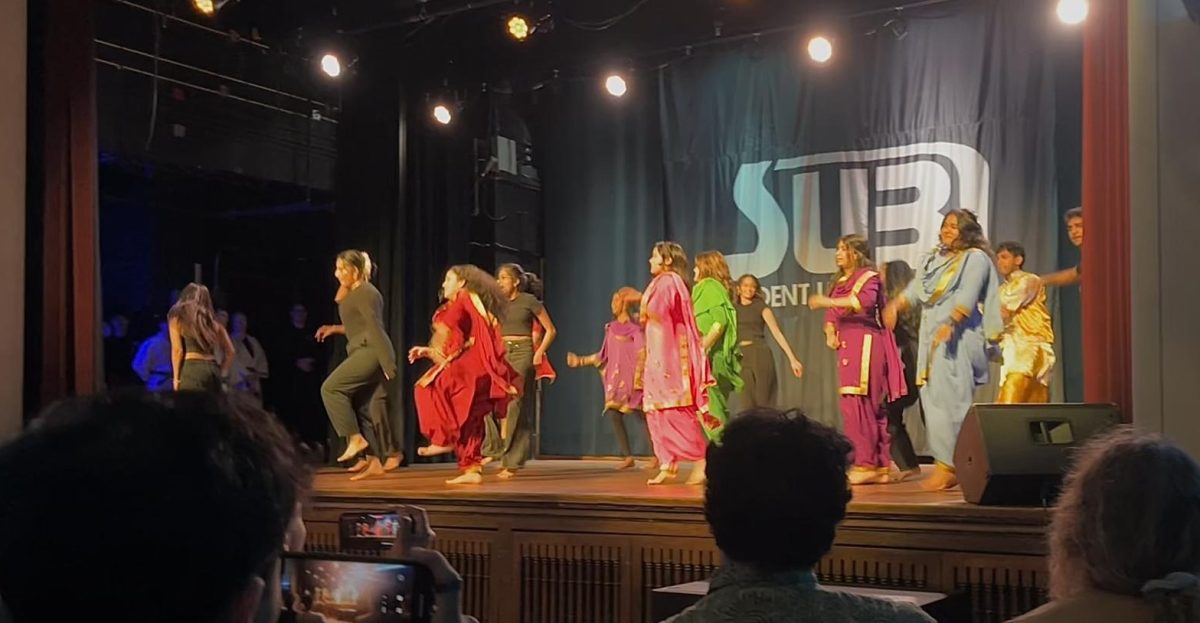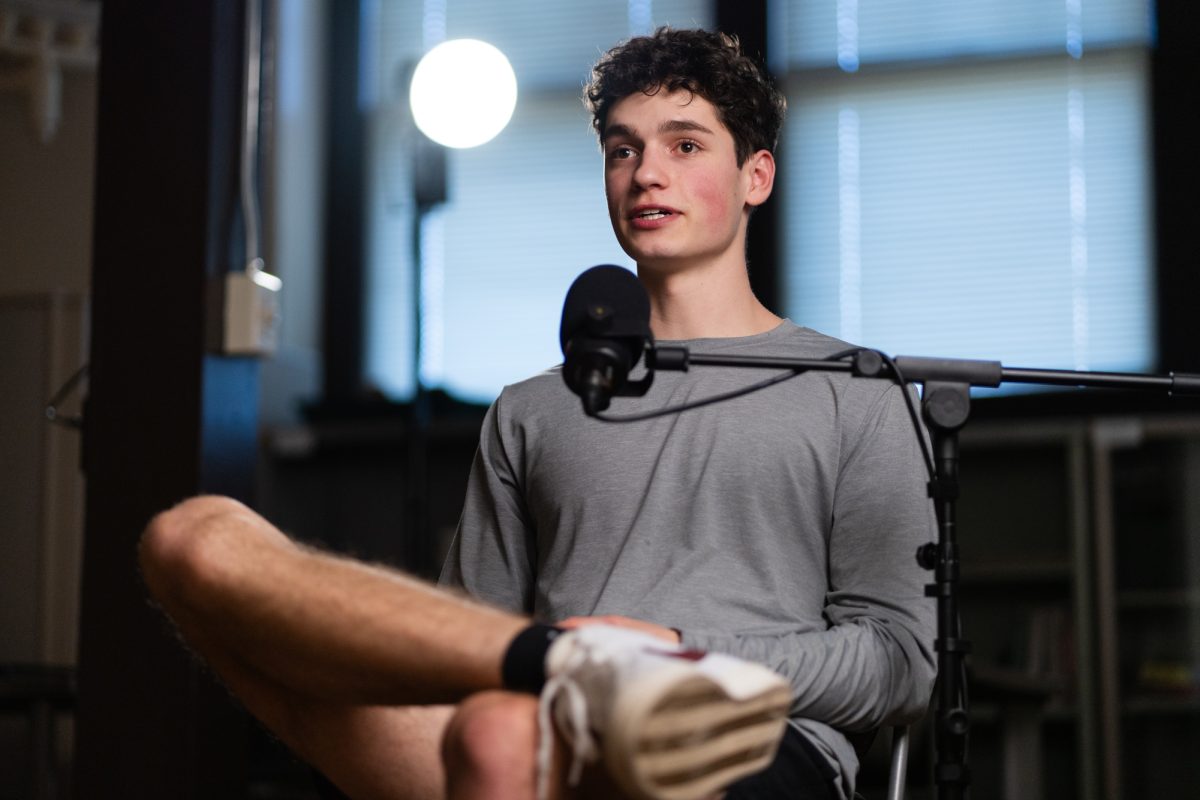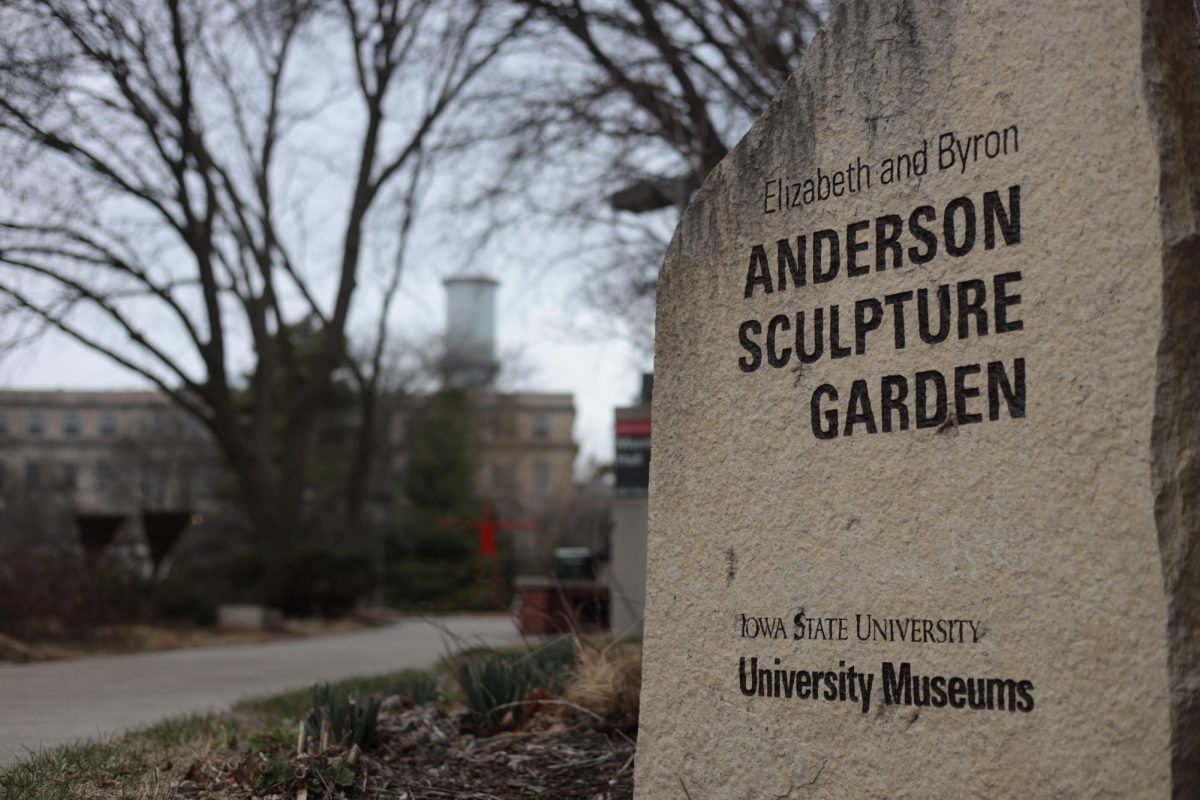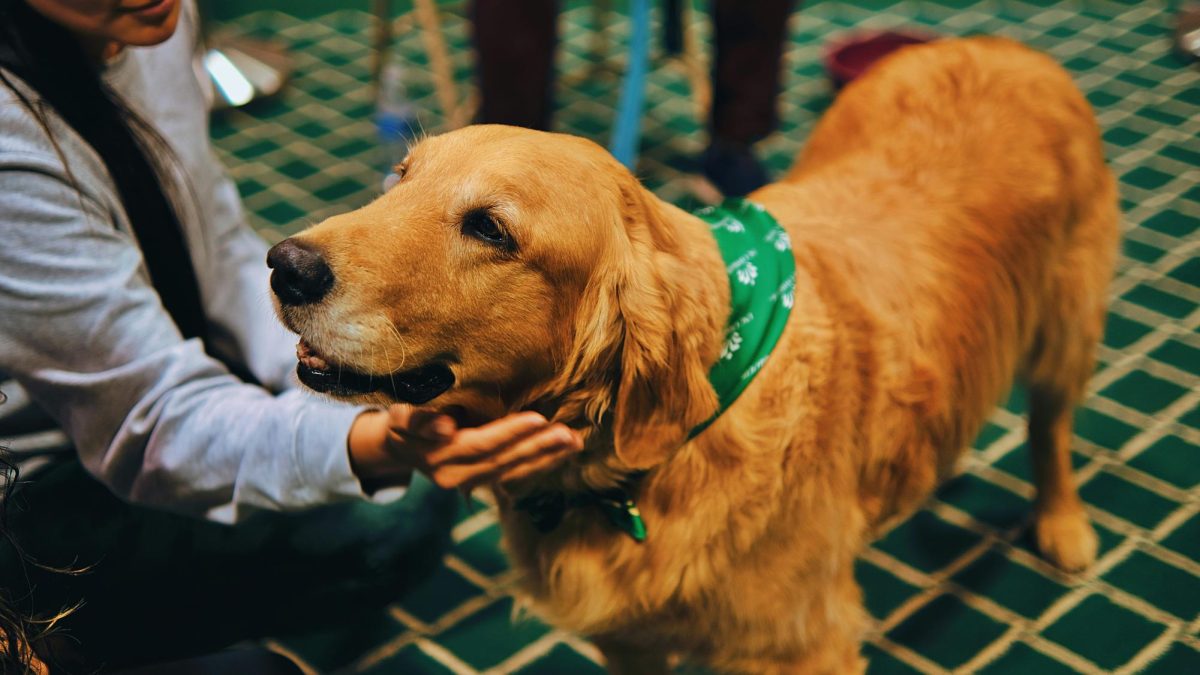Freddie Bitsoie shared the unknown history of Native American culture and how it goes hand and hand with Native American food while highlighting his book, “New Native Kitchen: Celebrating Modern Recipes of the American Indian.”
The lecture started with Bitsoie discussing how there is no way to describe living the Native American lifestyle. He said many people live it differently through food, education, work or lifestyle.
Bitsoie said it can be hard for people to understand Native American food because politics can get involved; however, he takes a more objective approach.
“When we talk about food, we can do all these different aspects of political movements with food,” Bitsoie said. “Then all of a sudden, we just tend not to want to listen and experience the food because there’s so much politics involved with that. Well, that’s what I do for a living. I lecture about Native food in a way where I try to be as objective as possible, understanding as possible and not as activist-prone as possible, even though I do have my own personal belief.”
Bitsoie has taken many different paths during his lifetime, starting as a cultural anthropology student at the University of New Mexico. He later attended a culinary school, where he worked to attain his mastery at Le Cordon Bleu in Arizona.
With time, Bitsoie soon became a well-known chef and appeared on the Food Network. He also worked as the Executive Chef at the National Museum of the American Indian and wrote and published his cookbook “New Native Kitchen: Celebrating Modern Recipes of the American Indian.”
Bitsoie said he worked on his cookbook for over 10 years and was inspired to write it because, while studying anthropology, he could never find a cookbook that described Native American culture.
“When I opened these books, it always said something like, ‘Native Americans were, Native Americans did, they used to,’” Bitsoie said. “I never found a book that was current that said this is what Native people do, this is who they are and this is the way certain dishes are prepared because it suits their identity. Whereas, when we look at foods from the European model, we have classic dishes.”
In college, one of Bitsoie’s professors encouraged him to get into cooking because all his papers discussed food and culture. When Bitsoie attended culinary school, he thought he would go back to college after and continue anthropology. Still, he said he didn’t realize the education he could receive while working in a kitchen, as opposed to a library.
Bitsoie continued working in a kitchen until he went to the Native American office in Phoenix and saw a billboard that said “Native American Cuisine Demo.” He attended the lecture and learned several things he didn’t know about Native American food.
Bitsoie said Native American food was affected by Jean Anthelme Brillat-Savarin, a French lawyer who coined the term “You are what you eat.”
“This was the gentleman who created the term only because, in a nutshell, he was completely against the foods coming in from the Western Hemisphere because he didn’t think highly of Native American people,” Bitsoie said.
The lecture detailed a deep history of where the variety of food Americans eat originates from and why dishes from France and Europe are more well-known in the United States.
Towards the end of the lecture, Bitsoie explained his theory called the “Hierarchy of Food,” the ideology that people will splurge on certain cuisines like French and Italian food without question. Whereas food from places like Mexico and Ethiopia, people will expect the prices to be lower because they are poorer countries.
“When it comes to buying restaurant food for some peculiar reason, just because of how poverty is portrayed, we think and feel that if their culture isn’t pretty enough, as far as finance and appearance, we don’t have to pay so much for their food,” Bitsoie said.
Bitsoie ended the lecture by saying how important it is to look back and respect the original culture of Native American food and share the stories of where it came from.
“There’s really no shame in food, there’s no shame in asking for food, there’s no shame in giving food, there’s no shame in helping somebody else,” Bitsoie said. “So food is just that one constant in our lives that we always should respect.”
Dayna Robinson, a first-year studying human resource management, originally attended the lecture Monday for a class requirement. However, Robinson said she enjoyed the lecture because she’s never had Native American food before.
Gracie Outhouse, a sophomore studying architecture, said she enjoyed Bitsoie’s bubbly personality and the stories he shared about his cooking experience.
“It didn’t feel too scripted; he shared a lot of his own stories,” Outhouse said.
Dana Halsband, a sophomore studying marketing, said that Bitsoie offered a new perspective on an area she had never learned about.
The lecture took place at the Memorial Union and was a part of Iowa State’s Lecture Series, co-sponsored by ISU Dining, Food Science and Human Nutrition, Culinary Science Club, United Native American Student Association and Committee on Lectures. During the event, audience members could buy Bitsoie’s book, “New Native Kitchen: Celebrating Modern Recipes of the American Indian.”
Bitsoie’s book, “New Native Kitchen: Celebrating Modern Recipes of the American Indian,” is available online.
For more information on the Iowa State Lecture Series, visit the Lecture Series website.


